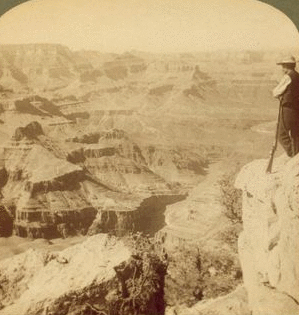EBTKE-- Negeri gingseng Korea Selatan melirik peluang investasi energi terbarukan di Indonesia. Hal itu dikatakan oleh Wakil Menteri Energi dan Sumber Daya Mineral (Wamen ESDM) Widjajono Partowidagdo seusai pertemuan antara Duta Besar Korea Selatan untuk Indonesia Kim Yung Sun dan Menteri ESDM beserta Wamen ESDM, di Gedung Kementerian ESDM, Jakarta, Senin sore, 14 November 2011.
"Korsel berminat investasi di Indonesia, tidak hanya di Jakarta tapi daerah-daerah juga. Tidak hanya listrik tapi juga energi terbarukan," ujar dia.
Menurut dia, pemerintah Korsel sangat konsen investasi di sektor energi. Hal itu dibuktikan melalui minatnya terhadap pembanguan receiving terminal LNG di Belawan Medan Sumatera Utara dan di Semarang. "Korsel welcome sekali dengan pembangunan receiving terminal tersebut. Bahkan yang di Semarang mereka juga open," kata dia.
Pada kesempatan yang sama, Duta Besar Korea Selatan untuk Indonesia, Kim Yong Sun mengatakan bahwa Indonesia merupakan negara yang sangat potensial untuk berinvestasi khususnya di sektor energi. "Kita ingin kerjasama di bidang energi dan pembangkitan dan ini menjadi bagian dari agenda kami terutama dalam KTT Asean di Bali nanti," tambah Kim Young Sun.
Menurut Kim, pengembangan energi terbarukan di Indonesia sangat potensial sekali mengingat Korea Selatan memiliki teknologi tersebut. "Renewable energi itu sangat kompetitif dengan teknologi kita. Namun begitu berapa jumlah investasinya kita belum bicarakan. Kita hanya bicarakan yang general saja," tukas Kim Young Sun.
Kim Young Sun menambahkan bahwa Minggu ini Presiden Korea Selatan akan mengunjungi Bali dalam rangka KTT Asean guna melakukan pembicaraan lebih lanjut.
Selain berinvestasi di sektor energi pemerintah Korea Selatan juga tertarik mengembangkan industri elektronik, garmen, sepatu dan industri baja.
Pertemuan Bilateral Indonesia-Korea Selatan dimulai pada tahun 1979. Hingga tahun 2006 RI dan Korea telah melaksanakan pertemuan bilateral sebanyak 21 kali dalam bentuk Joint Committee on Energy.
Pada tanggal 4 Desember 2006 di Hotel Mulia, Jakarta kedua negara melaksanakan pertemuan Joint Committee on Energy ke-22. Dalam pertemuan tersebut kedua negara sepakat untuk lebih meningkatkan dan mengintensifkan kerjasama sektor energi dan sumber daya mineral yang melibatkan pihak swasta kedua negara. Hal ini ditandai dengan adanya kesepakatan pembentukan Indonesia – Korea Energy Forum (IKEF) melalui penandatanganan MoU antara Departemen Energi dan Sumber Daya Mineral, Indonesia dan Ministry of Commerce, Industry and Economy, Korea. Energy Forum dimaksud diharapkan menjadi wadah baru bagi kerjasama RI – Korea sektor ESDM di masa mendatang menggantikan Joint Committe on Energy. Ditjen Migas bertindak selaku focal point kegiatan kerjasama tersebut.
IKEF telah terlaksana sebanyak empat kali. Penyelenggaraan IKEF pertama dilaksanakan pada tanggal 25 Juli 2007 di Seoul, Korea Selatan. Dalam forum ini dicapai kesepakatan kerjasama investasi sebesar US$ 8,45 Milyar yang terdiri dari 8 proyek, dan ditandatangani 2 MoU.
IKEF ke-2 dilaksanakan pada tanggal 15 Oktober 2008 di Jakarta, Indonesia. Petemuan membahas dan mendiskusikan tiga tema utama, yakni “Oil and Gas”; “Coal and Minerals”; dan “Electricity, New and Renewable Energy”.
Penyelenggaraan IKEF ke-3 dilaksanakan pada tanggal 25 Maret 2010, di Seoul, Korea Selatan. Pada Pertemuan diketahui beberapa kerja sama potensial untuk dikembangkan di masa depan diantaranya adalah pengembangan tambang batu bara di Provinsi Jambi, Sumatera, kegiatan Research and Development, Revamping Kilang, minyak pelumas berbasis tanaman, kerja sama dalam bidang survey, inspeksi, dan laboratorium pengujian dalam bisnis migas dan kimia, Pengembangan IPP Mulut Tambang, kerja sama Joint Research and Development dalam biofuel, Li-ion Baterai untuk Mobil Listrik dan Hybrid, Hydrogen Fuel Cells, Super Aspal, dan Bahan Kimia untuk EOR.
Selanjutnya, pertemuan The 4th Indonesia – Korea Energy Forum pada tanggal 30 Juni s.d. 1 Juli 2011 di Hotel JW Marriot, Jakarta, hasil-hasil antara lain, Delri menyampaikan peluang-peluang yang terdiri dari kegiatan pengembangan, pengolahan, pembangunan infrastruktur bidang energi dan sumber daya mineral termasuk program-program sektor energi yang menjadi bagian dalam Master Plan of Acceleration and Expansion of Indonesia Economic Development 2011-2015 dan Pihak Korea menyampaikan usulan kerjasama dalam pembangunan proyek-proyek energi dan mineral di Indonesia seperti mega proyek
CNG yang meliputi pengembangan lapangan gas stranded, fasilitas transportasi dan penyimpanan
CNG serta pembangunan pabrik gas amonia. Selain itu, pihak Korea juga mengharapkan kerjasama dalam hal
FSRU terminal construction, pengembangan
CBM, eksplorasi bijih tembaga di Flores, usulan
MoU mengenai proyek
solar power serta mengenai status pengembangan energi baru terbarukan Korea.
Source : http://www.ebtke.esdm.go.id/berita/428-korsel-minat-investasi-energi-terbarukan-indonesia.html
Kompetisi Web Kompas MuDA & Pertamina











































